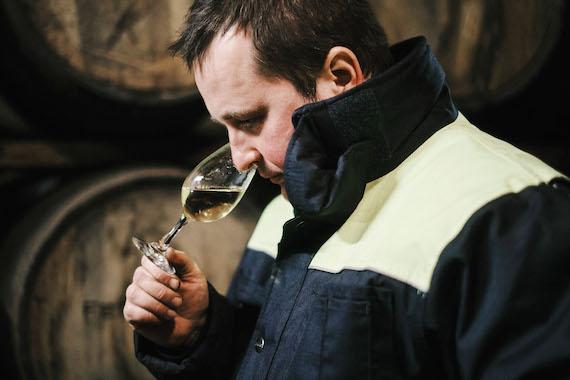“I think some of the best quality wood in the world comes from Scotland and maybe Hungary, and everything we’re doing is purely focused on improving flavour.
“We’re actually the first brand I know of to send barrels of Scottish oak abroad for ageing in different spirits. We’re waiting for them to come back, which could be exciting.”
The two main varieties of Scottish oak are Quercus robur and Quercus petraea and according to The Whisky Works website, sustainability of Scottish oak is very much on its conscience.
“Scottish oak has not been widely used to make casks for maturing whisky,” the site declares. “It rarely yields the knot-free wood required for making staves for casks and can be expensive to use.
“However, an important part of The Whisky Works was developing a longterm, sustainable approach to sourcing and utilising Scottish oak. Our collaborative partnerships with forest owners, sawmills and cooperages have enabled us to get closer to this part of the whisky-making process.”

Andrew Russell, general manager at the Speyside Cooperage, which collaborates with The Whisky Works, tells Drinks International that, while the company has seen an uptake in the demand for Scottish oak casks, it enjoys working with local wood.
Russell says: “There are no huge differences [between local and foreign oak]. Instead of cutting into stave and heading pieces we cut it into planks, which we then let dry. This allows us to identify the defects, knots and porous parts, however it is difficult to source due to the lack of oak trees available in Scotland. But on the whole, we have noticed an uptake in Scottish oak casks.”
ROBUST AND DISTINCTIVE
Elsewhere, Sandy Hyslop has used Scottish oak for his latest Royal Salute release. The Pernod Ricard master blender says the flavours brought forward by whiskies aged in local oak brings something new to its 26 Year Old Scottish Oak Cask release.
Hyslop says: “For this unique expression, I wanted to really encapsulate and balance the robust and distinctive flavours of wild Scottish oak casks into a blend that carries all the quality hallmarks expected of Royal Salute.
“Working with such precious casks was an extremely meticulous yet exciting task and adding this rare finish to the new blend has not only allowed us to release a whisky that offers a whole new dimension for Royal Salute lovers to discover, it also perfectly depicts the captivating and wondrous characteristics of Scotland.
“We were absolutely delighted with the flavours coming from the Scottish oak cask finish. It brought nutty flavours such as toasted almonds and aromatic notes of toasted oak and subtle spices like cinnamon, cloves, nutmeg and crystallised ginger.”
According to Hyslop, the oak came from Killearn near Stirling, was more than 100 years old and the casks were toasted with a heavy char.
Hyslop adds: “Scottish oak has a tight grain and has to be carefully selected for suitability for cask construction. Cooperages in Scotland tend to work on repairs to casks originating from America or Europe. So this project was exciting for them too, drying the oak and fabricating the casks for us from scratch to our exact specification. This process took nearly two years.




